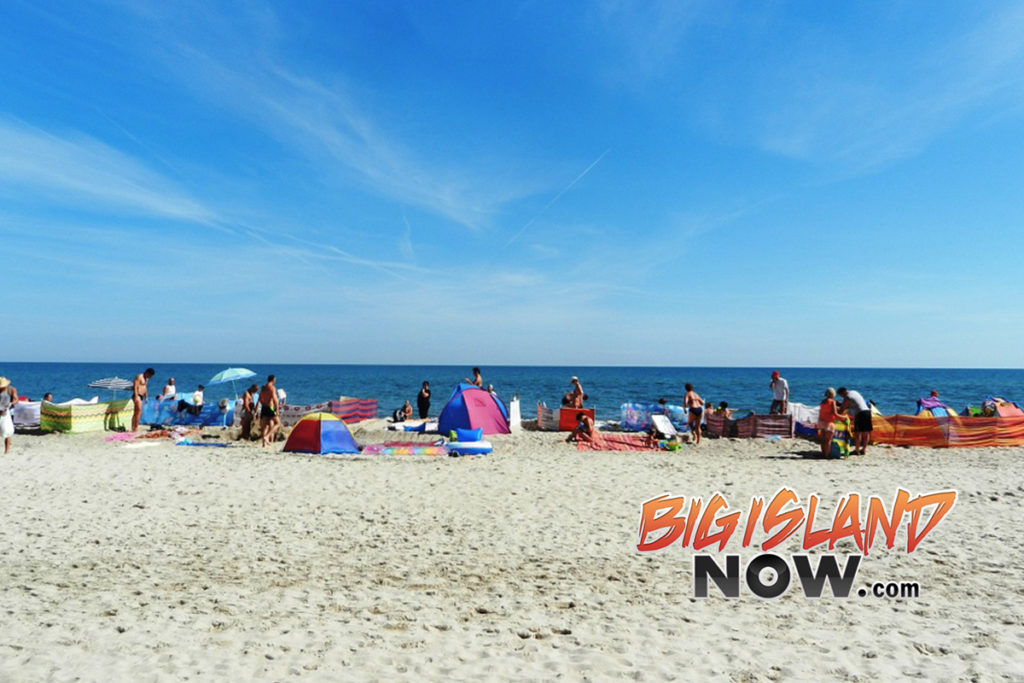New Hawai‘i Data Book Released
 The Department of Business, Economic Development and Tourism (DBEDT) today released the 2016 edition of the State of Hawaii Data Book.
The Department of Business, Economic Development and Tourism (DBEDT) today released the 2016 edition of the State of Hawaii Data Book.
The book is in electronic form and is available on the DBEDT website.
The book may be downloaded in whole or in part as either PDF or Excel files.
The state’s data book is the most comprehensive statistical book about Hawai‘i in a single compilation. With more than 800 data tables, classified into 24 sections, it covers a broad range of statistical information in areas such as population, education, environment, economics, energy, business enterprises, government, tourism and transportation.
“The data book has been around for 48 years and provides useful information related to Hawai‘i in a variety of areas including research, business planning and policy design,” said DBEDT Director Luis P. Salaveria. “The data book is the most popular item on the DBEDT website.”
“We understand that data are important in personal and business planning, so we try to provide the data to the public in a timely, accurate, and friendly way since,” said State Economist Dr. Eugene Tian. “Though we compile the book around the middle of August every year, we update the tables year round. We also try to add any valuable data in the book when they become available and abolish data when obsolete. One of the tables we added this year is the federal government grants to state government, and note that most of the grants were allocated based on population and the numbers presented in Table 9.61.”
Some of the interesting data in this newest edition show that:
- The top five places of birth for the foreign-born population in our state were the Philippines, Japan, China (excluding Hong Kong and Taiwan), Korea and Vietnam, based on data from 2011 to 2015. (Table 1.45)
- California was the top state of in-migrants (about 10,950) to Hawai‘i and out-migrants (about 10,500) from Hawai‘i in 2015. (Tables 1.69 and 1.70)
- In 2015, more than half of the 7,500 licensed beds in state-approved facilities were in long-term care facilities, while the remainder of the beds were in acute care and specialty care facilities. (Table 2.25)
- The enrollment at the University of Hawai‘i dropped in 2016. Total enrollment at University of Hawai‘i campuses was 53,418; a 4.2 percent decrease from 2015, and the lowest total enrollment since 2007. (Table 3.23)
- In 2015, about one out of every six people arrested for an index offense (such as murder, rape, robbery, larceny-theft, motor vehicle theft) was a juvenile offender. (Table 4.08)
- A little over two in every three containers purchased have been redeemed since the introduction of the beverage container redemption program in 2006. The highest redemption rate occurred in 2009 at 78.7 percent and the lowest rate in 2016 at 66.9 percent. (Table 5.33)
- Federal Award Expenditures by the Hawai‘i State Government was nearly $3 billion in both the 2016 and 2017 fiscal years. (Table 9.61)
- In 2015, there were 256,912 social security beneficiaries in the State of Hawai‘i who were paid estimated annual benefits totaling 3.8 billion dollars; both numbers were the highest recorded figures for the state. (Table 11.11)
- The private employer with the largest number of employees in 2016 was the Queen’s Health System with 7,455 employees. The second was Marriott Hawai‘i that had 6,929 employees. (Table 12.15)
- Hawai‘i’s household debt per capita was $68,500 in 2016, 46% higher than the U.S. average in the year. It was the highest among the 50 states, but lower than the District of Columbia at $81,200 in the year. (Tables 13.42 and 13.44)
- Hawai‘i had three banks, which had assets of more than $1 billion each and these banks employed a total of more than 5,000 people in 2016. (Table 15.04)
- Bus fares have remained unchanged for seven years. Since July 1, 2010, an adult one-way cash fare has remained at $2.50 and the youth fare at $1.25. (Table 18.26)
- Overseas passenger arrivals and departures both have exceeded 10 million in 2016 for the first time in history with arrivals at 10,223,372 and departures at 10,241,737. (Table 18.36)
- In 2012, 689 principal operator farmers were Native Hawaiian or other Pacific Islanders alone, making up 9.8 percent of the total. 2,824 principal operator farmers were Asian alone (40.3 percent of total), and 2,749 were White alone (39.3 percent of total). (Table 19.06)
- In 2016, 18,124 acres of forest and brush land were burned. Two cases of arson burned 5,801 acres, and two cases of equipment fires burned 4,701 acres. Previously, the last recorded equipment fire was 2011, and the last recorded case of arson was 2010. (Table 20.03)
- Over the past 10 years, Hawai‘i’s foreclosure filings went from a low of 453 in 2006 to a high of 3,422 in 2013 and is now at 1,734 in 2016. (Table 21.40)
- International students in Hawai‘i were estimated to have spent $225.3 million on living expenses, tuition and fees in the 2016/17 school year. The estimated direct, indirect, and induced impact of their spending on Hawai‘i’s economy was more than 5,000 additional jobs and an additional $484 million in output. (Table 24.12)
DBEDT’s Research and Economic Analysis Division (READ) also maintains the historical series of tables and updates the data continuously throughout the year.
The historical series and the update can also be found on the DBEDT website.






